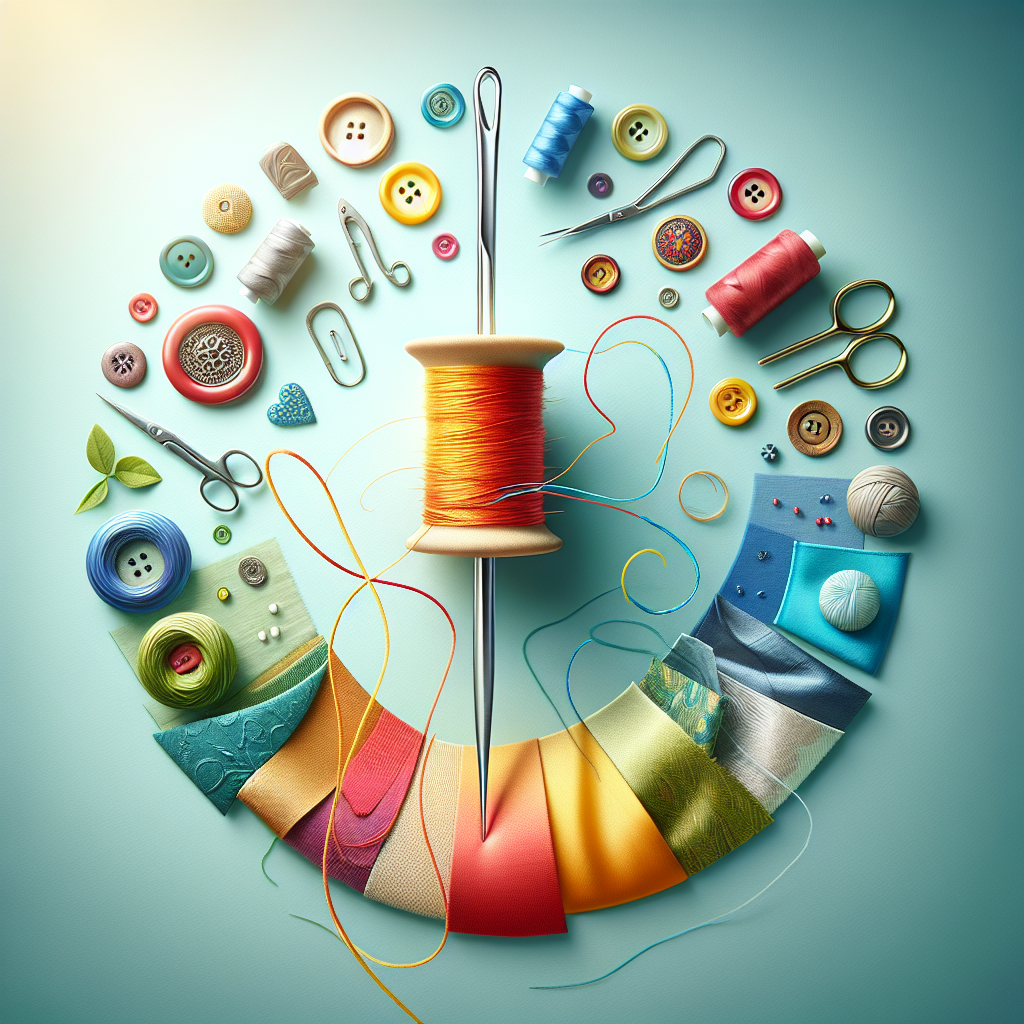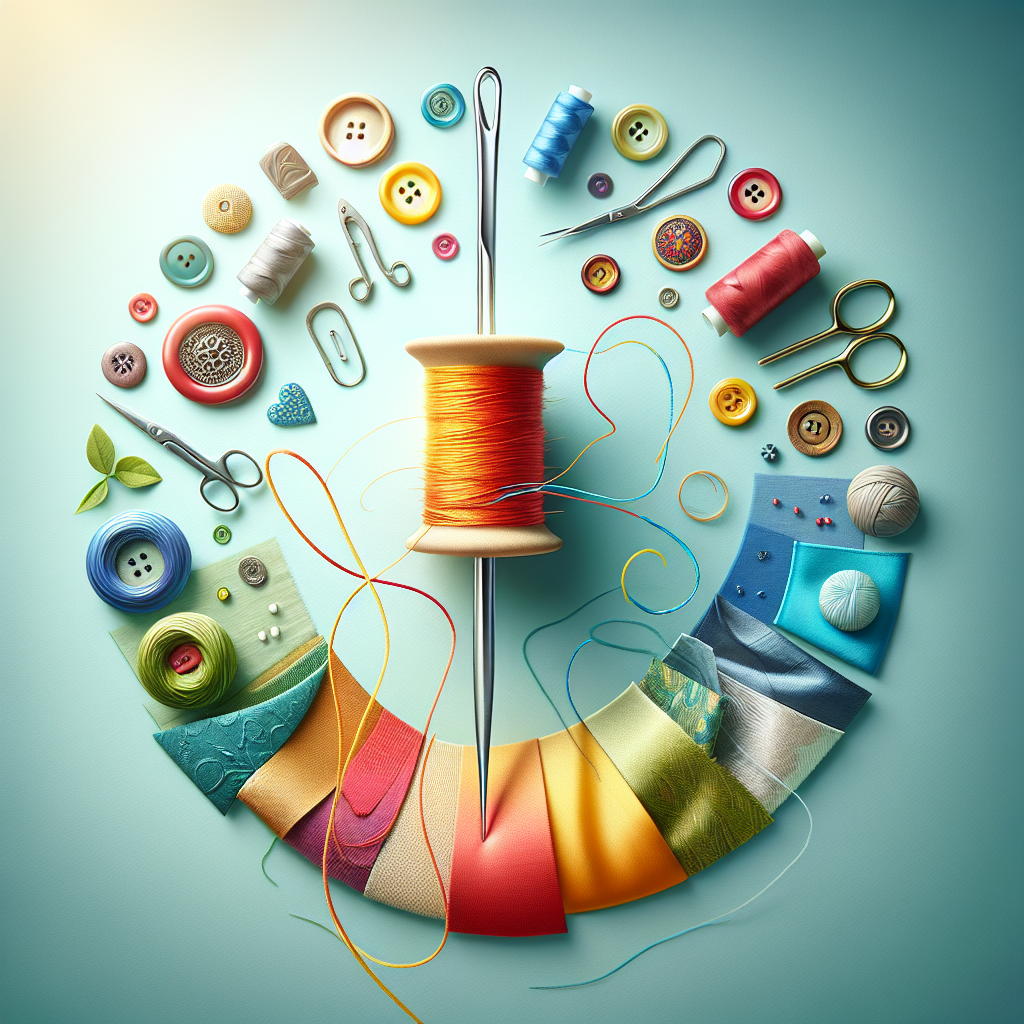So you’ve decided to take up sewing, but you’re not quite sure where to start? Don’t worry, we’ve got you covered! In this article, we’ll guide you through the essential skills and techniques that every beginner should learn first in sewing. Whether it’s threading a needle, understanding different stitching patterns, or mastering basic measurements, we’ll help you lay the foundation for a successful sewing journey. So grab your fabric and let’s get started on this exciting creative adventure!

Choosing the Right Sewing Machine
When starting your sewing journey, one of the first things to consider is choosing the right sewing machine. Understanding the different types of sewing machines available will help you make an informed decision. There are three main types of sewing machines: mechanical, electronic, and computerized.
Mechanical sewing machines are the most basic type and rely on manual controls. They are durable and suitable for beginners who want to learn the basics of sewing and don’t need advanced features. Electronic sewing machines have added features such as automatic thread cutting and adjustable stitch length and width. These machines are suitable for those who want more functionality and ease of use.
Computerized sewing machines are the most advanced and offer a wide range of features and functions. They have built-in stitches and embroidery designs, touchscreen controls, and programmable stitch patterns. These machines are ideal for experienced sewists and those who want to explore more complex projects.
Considerations when buying a sewing machine include your budget, the purpose of the machine, and the features you require. It’s essential to set a budget and stick to it, as sewing machines can vary widely in price. Determine whether you will use the machine for basic mending and alterations or if you plan to tackle more complex sewing projects. This will help you decide what features are necessary for your needs.
Essential features to look for in a sewing machine include a variety of stitches, adjustable stitch length and width, a free arm for sewing small items like cuffs and sleeves, an automatic needle threader, and a built-in light for better visibility. It’s also helpful to consider the machine’s weight and portability if you plan to sew on the go or attend sewing classes.
Learning Sewing Terminology
Before diving into sewing, it’s essential to familiarize yourself with commonly used sewing terms. Understanding sewing terminology will help you follow patterns and instructions more easily.
Some common sewing terms include:
- Seam: The line of stitching that joins two pieces of fabric together.
- Hem: Folding over and stitching the edge of a fabric to prevent fraying.
- Backstitch: Sewing a few stitches backward and forward at the beginning and end of a seam to secure it.
- Zigzag Stitch: A stitch that moves in a zigzag pattern and is used for finishing edges or creating decorative effects.
- Bobbin: A small spool that holds the lower thread in a sewing machine.
- Presser Foot: The attachment on a sewing machine that holds the fabric in place while sewing.
Understanding the parts of a sewing machine is crucial for operating it effectively. Some key parts include the needle, presser foot, bobbin, stitch selection dial, tension control, and feed dogs. Familiarize yourself with these parts to ensure smooth sewing.
In addition to sewing terms and machine parts, it’s essential to become familiar with sewing tools and equipment. Basic sewing tools include measuring tape, scissors, pins, needles, and thread. Other useful tools include a seam ripper, fabric marker, iron, and ironing board. Each tool serves a specific purpose and will greatly assist you in your sewing projects.
Mastering Basic Sewing Techniques
Threading the sewing machine is one of the first skills you’ll need to master. Each machine has a specific threading path, so consult your machine’s manual for detailed instructions. Threading involves winding the upper thread onto the spool, guiding it through various tension discs, and finally through the needle. Proper threading ensures smooth stitching and prevents thread breakage.
Operating the sewing machine involves learning how to control the speed, adjust stitch length and width, and use different stitches. Start by practicing sewing straight lines on scrap fabric, gradually increasing your speed and experimenting with different stitch settings.
Understanding different types of stitches will expand your sewing possibilities. Common types of stitches include straight stitch, zigzag stitch, buttonhole stitch, and stretch stitch. Each stitch has its own purpose and applications. Experimenting with different stitches will help you become more proficient and creative in your sewing projects.
Working with Fabrics
Understanding different fabric types is essential for selecting the right fabric for your projects. Fabrics can vary in fiber content, weight, and stretchiness. Common fabric types include cotton, polyester, silk, wool, and denim. Each fabric type has its own characteristics and suitable uses. Familiarize yourself with different fabrics to ensure successful project outcomes.
When choosing fabric for your project, consider factors such as the desired drape, color, and print. It’s also important to take into account the fabric’s care instructions to ensure it can be easily maintained.
Prepping fabrics before sewing is crucial for achieving professional-looking results. This process involves prewashing, ironing, and laying out the fabric. Prewashing helps to remove any shrinkage that may occur after sewing, while ironing ensures a smooth and wrinkle-free fabric surface. Laying out the fabric involves properly aligning the fabric grain to ensure accurate cutting and sewing.
Essential Sewing Skills
Measuring and marking fabric accurately is a fundamental skill in sewing. Whether you are following a pattern or making your own design, precise measurements are crucial for achieving a proper fit. Use a measuring tape to take body measurements and mark them on the fabric using fabric markers or pins.
Cutting fabric accurately is equally important. Use sharp fabric scissors or a rotary cutter and cutting mat to ensure clean cuts. Take your time and follow the designated cutting lines to avoid mistakes.
Sewing straight lines and curves is a skill that improves with practice. Start by sewing straight lines on scrap fabric, ensuring you maintain a consistent seam allowance. When sewing curves, use your fingers to guide the fabric and stitch slowly to maintain control. With time and practice, your sewing lines will become more even and precise.
Creating Basic Sewing Projects
Sewing simple projects is a great way to practice your skills and build confidence. A drawstring bag is an excellent beginner project that teaches basic sewing techniques such as sewing straight lines, creating a casing, and threading a drawstring. A fabric bookmark is another easy project that helps you practice sewing straight lines and finishing edges neatly. A basic pillowcase is a slightly more advanced project that allows you to explore techniques such as French seams and decorative stitching.
Each of these projects provides an opportunity to apply the skills you have learned and create something functional and beautiful.
Exploring Different Sewing Techniques
Understanding garment construction opens up a world of possibilities in sewing. Learning techniques for sewing seams, such as the French seam or the flat-felled seam, allows you to create professional-looking and durable garments. Exploring decorative sewing techniques, such as appliqué, patchwork, and embroidery, adds a personal touch to your projects.
By expanding your repertoire of sewing techniques, you can take your skills to the next level and create unique and intricate designs.
Understanding Patterns and Measurements
Reading and interpreting sewing patterns is an essential skill for more complex projects. Patterns provide a guide for cutting and sewing fabric pieces together. To read a pattern, familiarize yourself with the symbols, instructions, and diagrams included in the pattern envelope or booklet.
Taking accurate body measurements is crucial when working with patterns. Use a flexible measuring tape and follow the pattern’s instructions for specific measurements to ensure a proper fit. Taking accurate measurements will greatly contribute to the success of your sewing projects.
Pattern alterations and adjustments may be necessary to achieve a perfect fit. Understanding how to make these alterations, such as grading between sizes or adjusting length, will allow you to tailor patterns to your unique measurements and preferences.
Troubleshooting Common Sewing Problems
Sewing, like any skill, comes with its challenges. It’s important to learn how to troubleshoot common sewing problems to avoid frustration and achieve desirable results.
Identifying and fixing tension issues is a common challenge in sewing. Uneven or loose stitches can be caused by incorrect tension settings. Experiment with different tension levels until you achieve balanced and neat stitches.
Addressing skipped stitches is another common issue. Skipped stitches can occur when the needle is dull or when the fabric is too thick for the selected needle size. Changing the needle or using a fabric-specific needle can often solve this problem.
Dealing with broken needles is an unavoidable part of sewing. Broken needles can be caused by sewing through heavy layers of fabric, hitting pins, or improper needle usage. Replace broken needles immediately and ensure you are using the correct type and size for your fabric.
Expanding Your Sewing Skills
Once you have mastered the basic sewing techniques and completed various sewing projects, it’s time to expand your horizons and explore more advanced sewing techniques. Advanced sewing techniques include tailored garment construction, couture techniques, and intricate detailing such as pleating and ruffles.
Working with more complex patterns allows you to challenge yourself and elevate your sewing skills. Patterns with intricate details and multiple pattern pieces offer an opportunity to learn new techniques and create more elaborate garments.
Experimenting with different sewing projects, such as quilting, home decor, or accessories, helps you explore different sewing styles and broaden your expertise. Embrace new challenges and expand your sewing skills to bring your creative visions to life.

